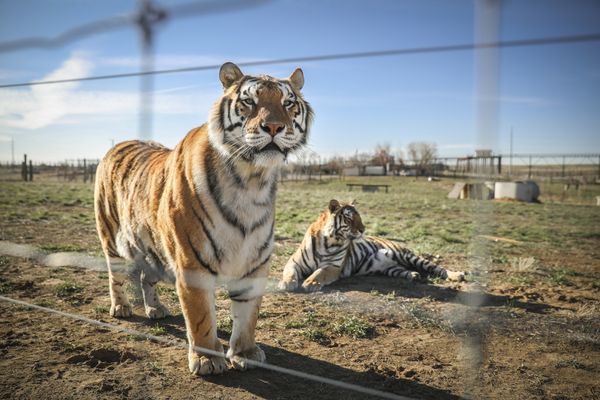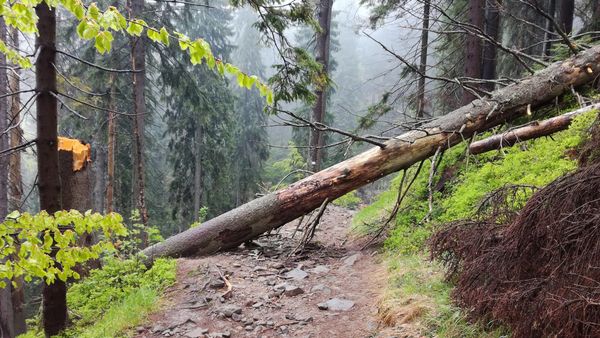Hundreds of far eastern curlews fly nonstop more than 10,000km every year to Darwin Harbour from Russia and China. But their southern habitat is under threat from a large industrial development backed by more than $1bn in federal government funding.
Known for its long curved bill and soft brown feathers, the far eastern curlew is the world’s largest migratory shorebird and one of 22 priority bird species the Albanese government has promised to support. The birds fly south each year to forage, rest and fatten up during summer before returning to the northern hemisphere.
Far eastern curlews are a marvel in the natural world and affectionately described as the ultimate endurance athletes. Unable to glide, soar or land on the ocean, they flap their wings for the entirety of their journeys until they reach safe and familiar coastal habitat thousands of kilometres away.
The curlew’s global population has fallen by 80% over the past 40 years, largely due to destruction and development-related changes to its intertidal habitat.
Government documents show the proposed industrial precinct at Middle Arm, on a peninsula 13km south of Darwin, will need about 1,500 hectares (3,705 acres) of native mangroves and savanna woodland to be cleared, affecting “threatened species, and sensitive and significant vegetation”.
The precinct is a proposed Northern Territory government development involving the construction of wharves and jetties to be used by industries including liquified natural gas, carbon capture and storage and critical minerals.
The former NT Labor government was criticised for promoting it as a “sustainable” development despite documents revealing officials considered it a “key enabler” for a large gas industry expansion.
Much of the public scrutiny of the project has focused on its potential contribution to the climate crisis and whether $1.5bn in federal support backed by Labor and the Coalition is effectively a fossil fuel subsidy.
But a preliminary assessment by the NT government shows the project would cause significant damage to local wildlife.
It would include the “loss of key high tide roosting habitats” for the far eastern curlew and the endangered bar-tailed godwit – another migratory species – as saltpans and mangroves were cleared and reclaimed. Far eastern curlews rely on these areas for foraging and roosting.
Dr Amanda Lilleyman, a shorebird expert and BirdLife Top End volunteer based in Darwin, said the Middle Arm development’s potential impact on the species was concerning and consistent with the loss of its coastal habitat around the world. “This has been the direct cause of the population declines over the last 40 years,” she said.
The far eastern curlew is also likely to be harmed by land clearing under way for a defence housing project at Lee Point, north of Darwin, where the birds feed and rest.
The federal environment minister, Tanya Plibersek, last year rejected a proposed apartment and marina development at Toondah Harbour in Queensland’s Moreton Bay because of its impact on an internationally significant wetland used by far eastern curlews and other endangered migratory species.
Toondah Harbour was designated worthy of protection under the Ramsar convention, a global treaty covering wetlands. The salt pans and intertidal zones of Darwin Harbour are not subject to the treaty. But Lilleyman said they still needed protection.
She said the curlew’s survival required all governments of countries within its east Asian-Australasian flyway to act.
“The survival of threatened migratory species is dependent on the sum of all of those habitat parts,” she said. “If all of the important habitat is protected then you’re starting to get on track for reversing the decline of the species.”
Sean Dooley, a senior adviser at BirdLife Australia, said far eastern curlews had “been hammered by habitat destruction up and down the entire flyway for the past 40 years”.
He said Australia’s national environmental law, the Environment Protection and Biodiversity Conservation Act, was “failing the species badly” because it did not factor in cumulative impacts of habitat loss in different places.
Dooley said damage from numerous developments added up to a “serious blow to the viability of the population”. “The idea that they can always just go somewhere else just doesn’t stack up any more and every remaining suitable habitat becomes even more precious,” he said.
The NT minister for logistics and infrastructure, Bill Yan, said an environment assessment was being done but the Country Liberal party government was “committed to rebuilding the economy through the development of the Middle Arm precinct”.
He said the assessment was identifying “the potential cumulative impacts of the precinct on environmental values and developing ways to protect them”, and it was inappropriate to draw conclusions before it was complete.
Dooley said protecting remaining far eastern curlew habitat would be “an act of hope for the future” that the species can be not just saved but could “return and recover”.
“The wonder of the curlew’s migration unites cultures across the flyway, their annual return a potent symbol of hope and renewal,” he said. “To consent to further habitat destruction obliterates that hope of a rich and balanced future.”







